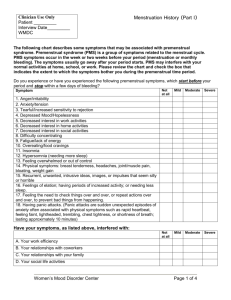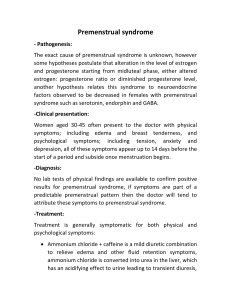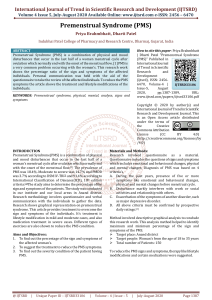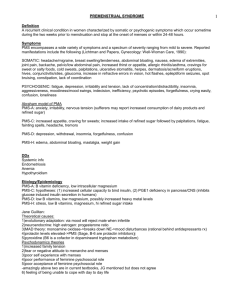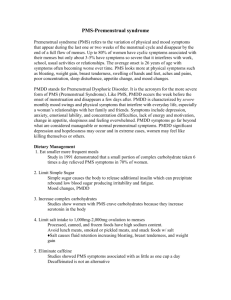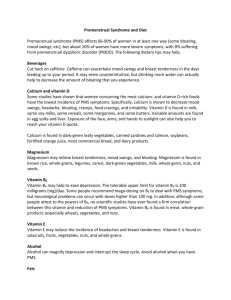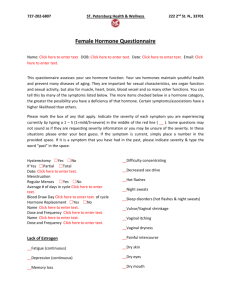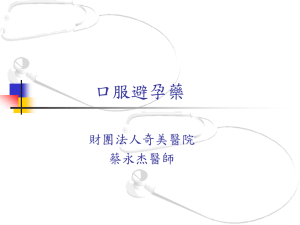PREMENSTRUAL SYNDROME (PMS)
advertisement
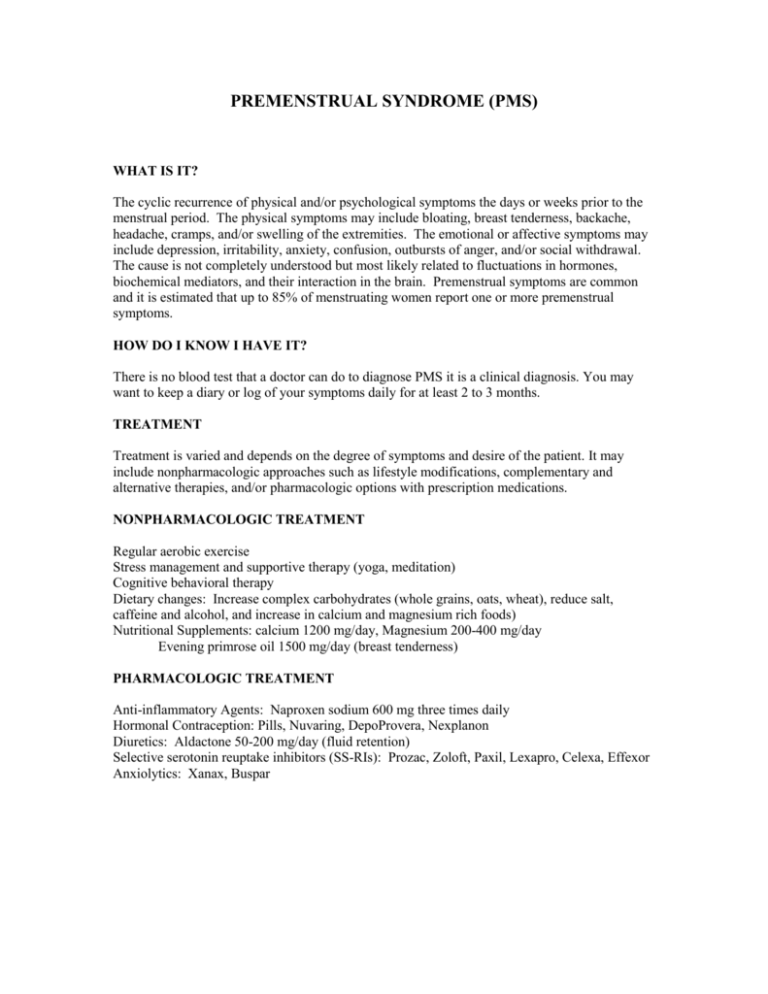
PREMENSTRUAL SYNDROME (PMS) WHAT IS IT? The cyclic recurrence of physical and/or psychological symptoms the days or weeks prior to the menstrual period. The physical symptoms may include bloating, breast tenderness, backache, headache, cramps, and/or swelling of the extremities. The emotional or affective symptoms may include depression, irritability, anxiety, confusion, outbursts of anger, and/or social withdrawal. The cause is not completely understood but most likely related to fluctuations in hormones, biochemical mediators, and their interaction in the brain. Premenstrual symptoms are common and it is estimated that up to 85% of menstruating women report one or more premenstrual symptoms. HOW DO I KNOW I HAVE IT? There is no blood test that a doctor can do to diagnose PMS it is a clinical diagnosis. You may want to keep a diary or log of your symptoms daily for at least 2 to 3 months. TREATMENT Treatment is varied and depends on the degree of symptoms and desire of the patient. It may include nonpharmacologic approaches such as lifestyle modifications, complementary and alternative therapies, and/or pharmacologic options with prescription medications. NONPHARMACOLOGIC TREATMENT Regular aerobic exercise Stress management and supportive therapy (yoga, meditation) Cognitive behavioral therapy Dietary changes: Increase complex carbohydrates (whole grains, oats, wheat), reduce salt, caffeine and alcohol, and increase in calcium and magnesium rich foods) Nutritional Supplements: calcium 1200 mg/day, Magnesium 200-400 mg/day Evening primrose oil 1500 mg/day (breast tenderness) PHARMACOLOGIC TREATMENT Anti-inflammatory Agents: Naproxen sodium 600 mg three times daily Hormonal Contraception: Pills, Nuvaring, DepoProvera, Nexplanon Diuretics: Aldactone 50-200 mg/day (fluid retention) Selective serotonin reuptake inhibitors (SS-RIs): Prozac, Zoloft, Paxil, Lexapro, Celexa, Effexor Anxiolytics: Xanax, Buspar

